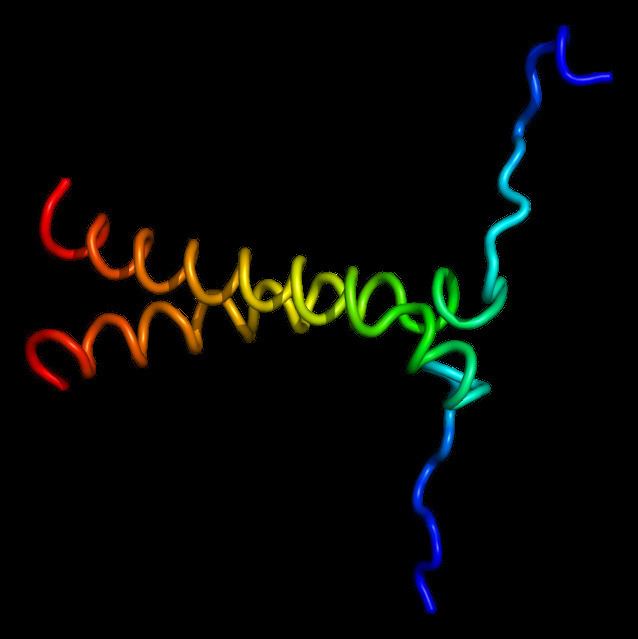Entrez 664 | Ensembl ENSG00000176171 | |
 | ||
External IDs MGI: 109326 HomoloGene: 2990 GeneCards: BNIP3 | ||
BCL2/adenovirus E1B 19 kDa protein-interacting protein 3 is a protein that in humans is encoded by the BNIP3 gene.
Contents
BNIP3 is a member of the apoptotic Bcl-2 protein family that is involved an atypical programmed cell death pathway resembling both necrosis and apoptosis. Many Bcl-2 family proteins modulate the permeability state of the outer mitochondrial membrane by forming homo- and hetero-oligomers. However, sequence similarity with Bcl-2 family members was not detected. Humans and other animals (Drosophila, Caenorhabditis), as well as lower eukaryotes (Dictyostelium, Trypanosoma, Cryptosporidium, Paramecium) encode several BNIP3 paralogues including the human NIP3L, which induces apoptosis by interacting with viral and cellular anti-apoptosis proteins.
Structure
The right-handed parallel helix-helix structure of the domain with a hydrogen bond-rich His-Ser node in the middle of the membrane, accessibility of the node for water, and continuous hydrophilic track across the membrane suggest that the domain can provide an ion-conducting pathway through the membrane. Incorporation of the BNIP3 transmembrane domain into an artificial lipid bilayer resulted in a pH-dependent conductivity increase. Necrosis-like cell death induced by BNIP3 may be related to this activity.
Function
BNIP3 interacts with the E1B 19 kDa protein which is responsible for the protection of virally induced cell death, as well as E1B 19 kDa-like sequences of BCL2, also an apoptotic protector. This gene contains a BH3 domain and a transmembrane domain, which have been associated with pro-apoptotic function. The dimeric mitochondrial protein encoded by this gene is known to induce apoptosis, even in the presence of BCL2.
Transport reaction
The reaction catalyzed by BNIP3 is:
small molecules (out) ⇌ small molecules (in)Interactions
BNIP3 has been shown to interact with CD47, BCL2-like 1 and Bcl-2.
